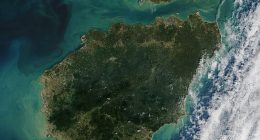The site, expected to go live today, should show the expected altitude, daily number of flights and predicted aircraft noise for any given location.
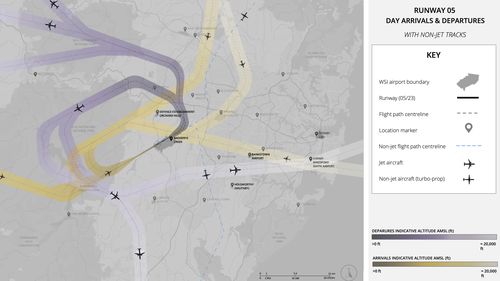
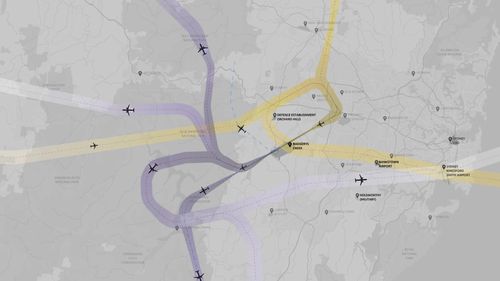
The federal Infrastructure Department released five proposed flight paths, which would be used depending on the time of day, air traffic levels and weather conditions.
Most of the paths show jets banking somewhere between the new facility at Badgerys Creek and Blacktown on either approach or descent, extending north from there.
One operating model sees jets take a tighter turn after takeoff to travel directly over Penrith, as well as an approach over Bankstown, at a much greater height.
One night mode operating from 11pm to 5am, conditions permitting, would see planes taking off and landing over less populated areas to the south-west.

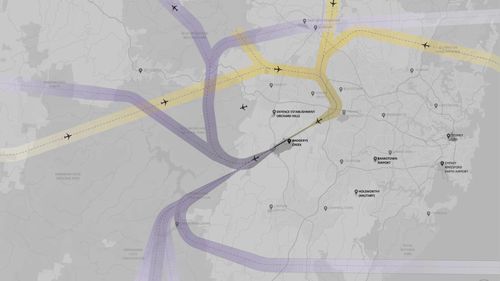
Infrastructure Minister Catherine King said the paths were designed to minimise flights over residential areas, particularly during the night.
She said the preliminary paths incorporated community feedback from “proof-of-concept” options released in 2015.
“The Albanese government is committed to balancing the needs of the community, environment, industry and users of the broader Greater Sydney airspace, while maintaining safety as a priority, in the design of WSI’s flight paths,” King said.
“That is why the community will be able to provide feedback on the draft EIS during a formal public exhibition period following its release.
“This feedback will be considered as we finalise the flight path design ahead of the new airport starting operations by late 2026.”
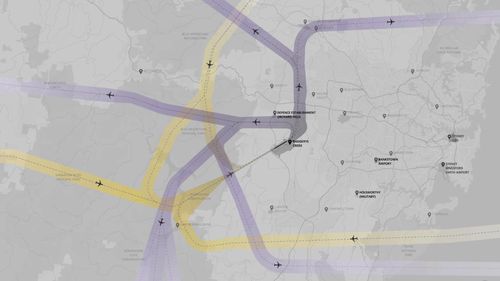
A government brochure released with the flight paths points out restricted airspace over the Orchard Hills Defence Establishment prevents planes from making a tighter left turn on takeoff to avoid the wider Blacktown area.
Those turns were designed to reduce noise to the north of the airport by “tracking as far west as possible of St Clair”.
Other decisions made were designed to avoid jets flying low over Silverdale and avoid conflict with planes using Mascot and Bankstown airports.
Read Related Also: ‘Indiana Jones and the Dial of Destiny’ review: End this series now!
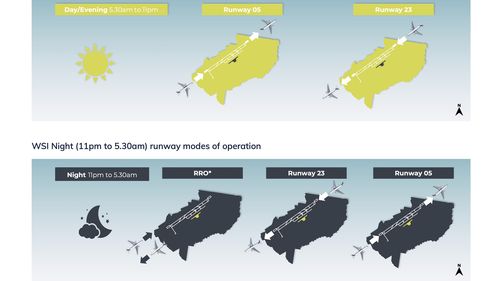
Jets generally land in one direction or another based on the prevailing winds.
The department also released noise modelling showing the worst of the impact would unsurprisingly be felt in areas directly adjacent to the airport.
One model, based on predicted 2033 traffic, appears to show areas where planes will be loud enough to interrupt an indoor conversation multiple times a day limited to sparsely populated areas such as either side of St Clair and Erskine Park.
The noise level is listed as 70 decibels, or roughly as loud as a washing machine.
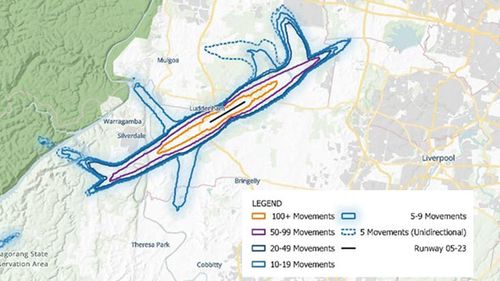
Blue Mountains Mayor Mark Green Hill has campaigned against the airport for years, complaining it will disrupt residents.
“You know, in inner Sydney, there are noise attenuation measures, there are curfews, none of those things are planned for the people of Western Sydney in the Blue Mountains,” he told 9News in May.
“So we very much feel like second-class citizens.”
The department has also released noise modelling, which will allow residents to estimate how many times a day they’ll be interrupted by jet noise.
One model based on predicted 2033
Some residents hope to receive compensation if they’re under the flight path. The federal government spent $194 million to insulate 3500 homes when Mascot airport opened a new runway in 1994.
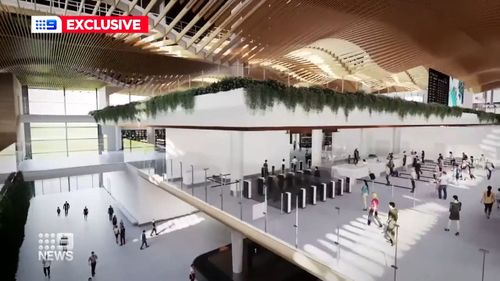
Last month, a spokesperson told 9News a draft noise insulation and property acquisition policy would be released later this year.
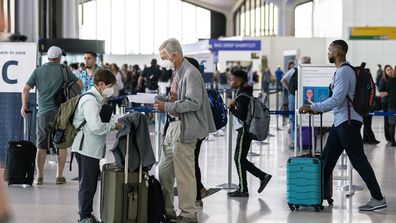
The worst 10 airports for flight delays around the world




